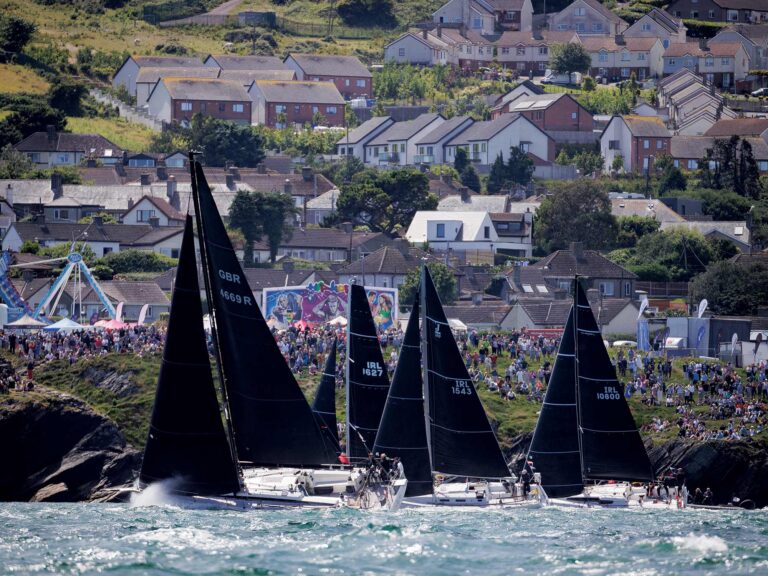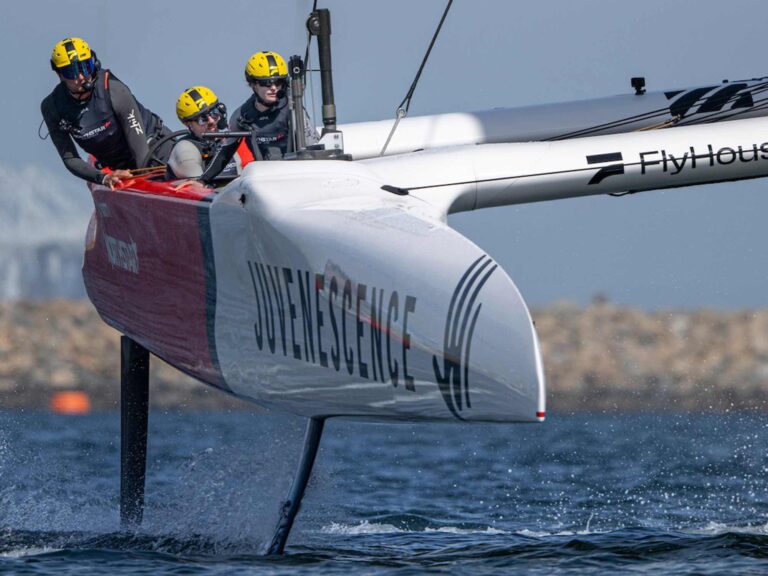
Around the Eastern YC the night before the J/70 World Championship was scheduled to begin in Marblehead, Massachusetts, there was a tremendous amount of nervous energy among the 91 teams preparing to race in one of the most talent-laden one-design events of modern times. More than 25 teams had coaches on hand, and 56 teams were racing with two or more professionals on board. The J/70 is a simple boat, but there would be nothing simple about getting to the front of the fleet.
As emcee at the opening ceremony, I looked out over the crowd of 500 sailors or so and wondered, What is it going to take to prevail in such a star‑studded field?
In the end, Marblehead native and hometown favorite Jud Smith and his crew won by a single point after 11 races contested in strong, shifty and extremely light conditions. It was a special victory for this 61-year-old skipper, but it didn’t happen by accident. Smith and his teammates spent a year preparing for what he knew would be a battle of attrition.
With 11 races and one throw-out over six days of racing, it was essential to avoid major mistakes in any form. In the end, 10 individual boats won at least one race, and Smith finished with a 10.5-point average, which sounds high, but is an indication of how difficult it was to win this regatta. In a densely packed fleet on relatively short beats, Smith says, it was challenging to find clear wind and open lanes. Nothing on the course came easy, he says, but his meticulous preparation gave him confidence they could improve his position every leg.
A year earlier, Smith had crewed for American skipper Peter Duncan when they won the J/70 Worlds in Italy. For that regatta, the team raced in several events in Europe and learned how to sail faster. “The 2017 Europeans and Worlds were both heavy-air planing regattas, and most European teams race with heavier teams of five,” Smith says. “Because we were a lighter four-up team, we worked hard on our heavy-air tuning and trim in the 15- to 30-knot races to be as fast upwind as the best five-up teams. Being lighter was better downwind. We were also one of the few teams using a higher-clewed jib in the 2017 season and still in-hauling in the fresher conditions. In-hauling with the weather sheet made for better pointing and less heel. Better pointing and less leeway means we sailed less distance, which got us to the weather mark in to the top of the pack every race, even against the heavier crews in the large fleet.”
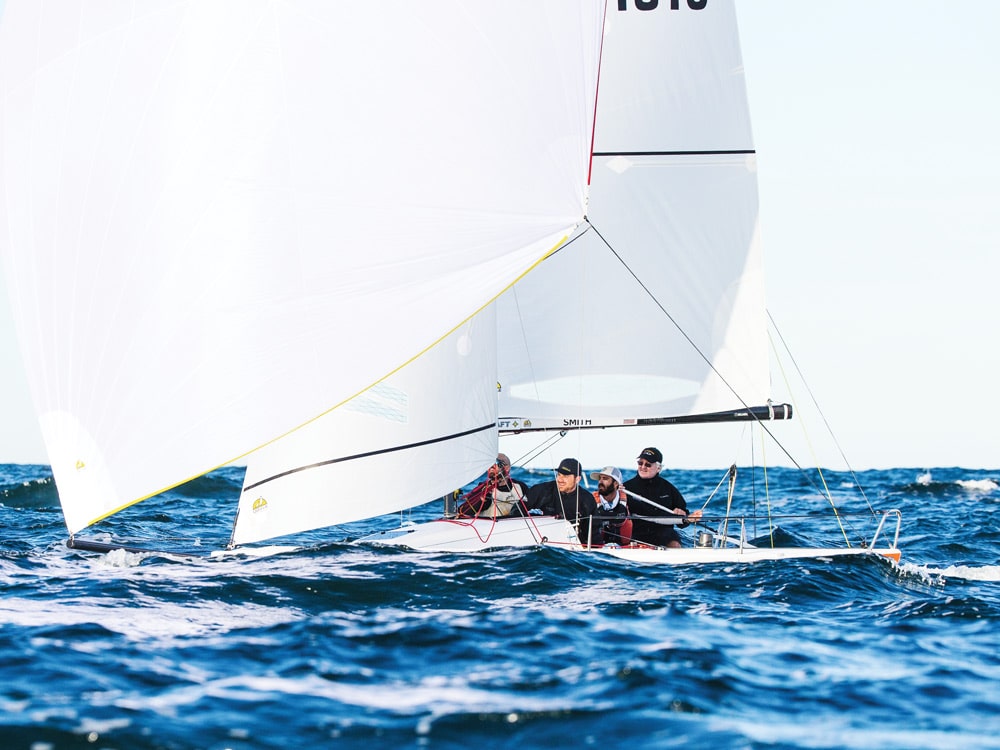
With the 2018 J/70 Worlds contested at his home club, Smith wanted to sail his own boat. His first move was to acquire a new boat because he felt his first boat, which was built in 2012, was not as good downwind as the European boats. Duncan and Smith both purchased new 2018 European-built boats and shipped them together to Miami for training in winter 2018.
One of Smith’s crew, Will Felder, block-sanded the keel to perfection. He also upgraded all of the boat’s halyards and lines with heat-set Dyneema SK99. “We went with tapered sheets and a minimum-diameter backstay with a taller bridle,” he says. “It’s important that all halyards don’t stretch, and that nothing breaks.”
The next item on his list was to recruit a young and agile crew. “The average age of my crew was 30, which really helped,” he says. “Our crew worked hard at pumping the spinnaker downwind, and we were fast. When you have a great crew, it’s easier for the helmsman to sail fast.”
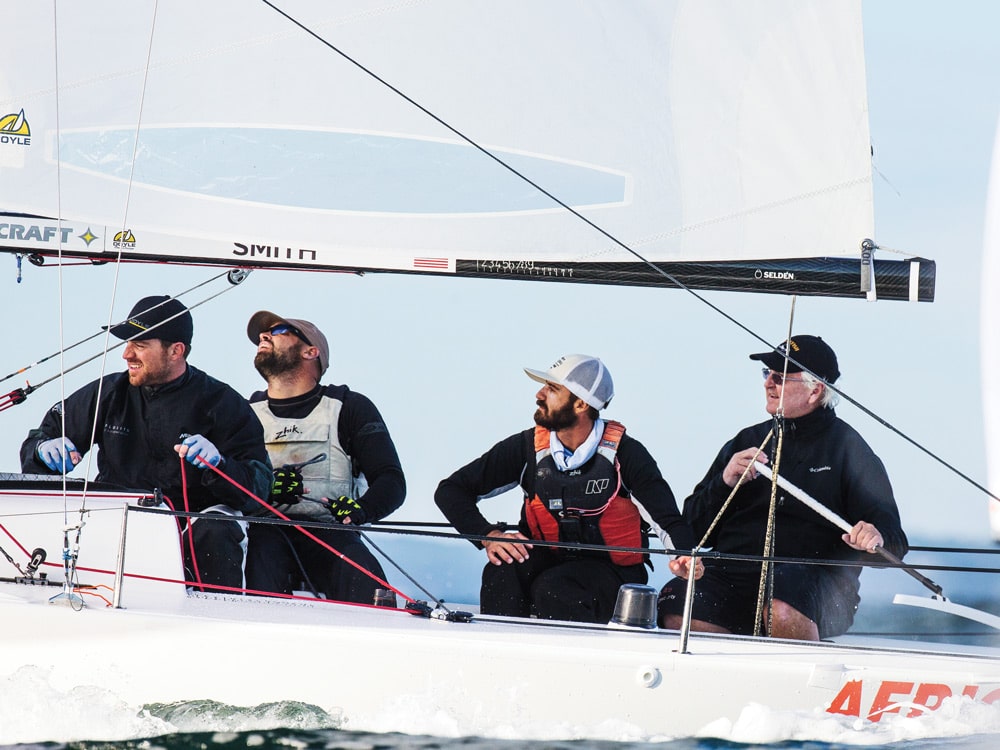
Over the past 36 years, I’ve tried to recruit Smith to race with me in a variety of regattas because he’s one of the best with rig tune and trimming, so it was fascinating to hear how hard he had to work to recruit his own crew. “It started with Lucas Calabrese, who won a bronze medal in the 2012 Olympics in the 470 class,” he says. “Will Felder, another professional sailor, joined the team next, and the one amateur on our boat was Marc Gauthier, who is a professional ship captain and a graduate of Maine Maritime Academy. The crew is the key to doing well in this fleet.”
Did local knowledge play into the team’s success? Of course, but not as much as one would think. It was simply a matter of knowing beforehand what to expect in the bigger picture.
“As I looked into the weather we could expect for the Worlds, I went back 20 years to see if there were any trends during that 10-day period in late September,” Smith says. “The NOAA website has excellent weather-buoy history. I learned that 90 percent of the time you could expect a windy northeasterly, 80 percent of the time during that period there would be a frontal passage and 50 percent of the time there would be one day with no wind.”
The regatta featured all three weather events. “We prepared for heavy air,” Smith says. “Most people thought it would be light all week because the summer regattas were generally lighter.”
Over the course of the year, Smith and his team sailed in seven major regattas and many regional ones, and he arranged two- to three-day training camps conducted every few weeks. “We usually had two to four boats on the water together,” he says. “We learned how to trim the jib and position the leads, narrowed down rig settings, and learned how to steer the boat in all sea states. The training camps were helpful because we were able to pick the right rig setting prior to each race of the Worlds.”
There’s a fine line between having enough power and helm upwind and being overpowered and heeling too much, he says. “We basically set up the J/70 to a point and then make sure we are fast enough forward without heeling too much,” Smith says. “In the short, confused sea state we had in Marblehead, we were basically trying to recover speed after every wave, especially on port tack, with the waves on the bow. This technique requires constant mainsheet adjustments and a straight enough mast with enough rig tension to support the headstay and not have the main wash out. You can’t twist and ease main effectively on a mast that is overbent and washing out. The nasty waves put a premium on supporting the headstay with rig tension and backstay load without overbending the mast. Will [Felder] would then ease the jib in-hauler in the bad waves and bow-string it back in when we’d hit the smoother spots. He did so all the way to windward. The big waves and variable velocity required constant trim adjustments to accelerate after each wave without heeling too much.”
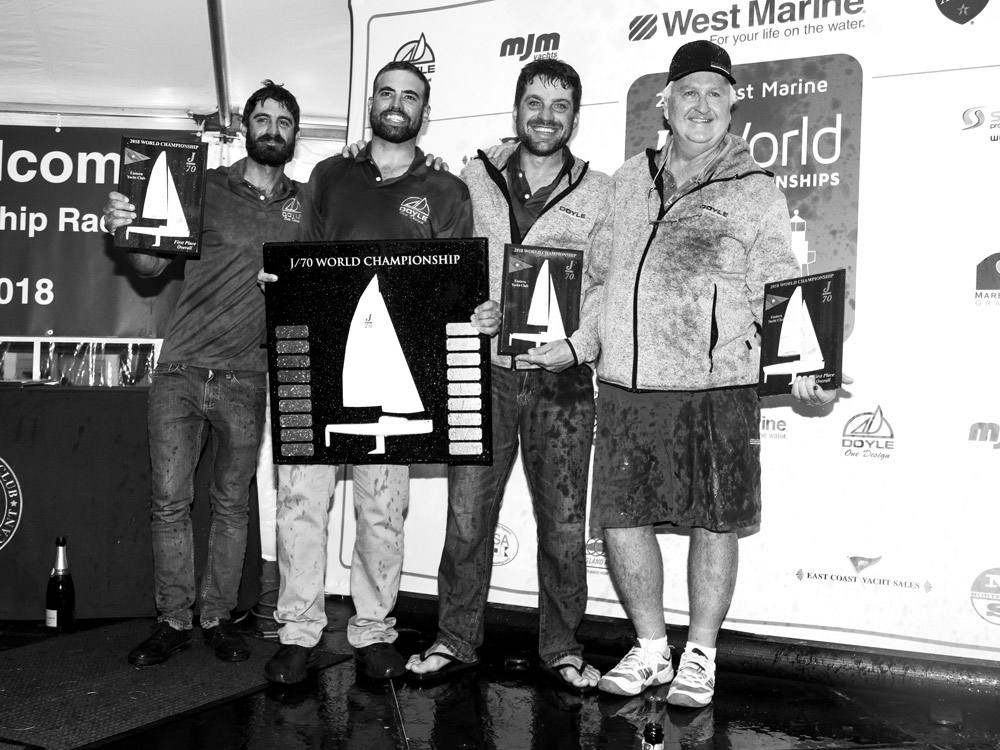
Throughout the lead-up to the Worlds, Smith raced Etchells when he could in preparation for the Worlds in Australia, scheduled a month after the J/70 Worlds. While the two classes are dissimilar, Smith capitalized on a few subtle similarities between them. “The boats are similar base shroud tune,” he says. “They often sail with the same number of people, and the same things happen on the racecourse, like the need for getting off the starting line cleanly, or managing a big fleet on a closed course.”
One of the differences in the J/70 class, he says, is the use of GPS-based instrumentation, which tells the competitor where he or she is relative to the starting line. “With a two-part starting line, most teams relied on two instruments,” he says. “It’s now more difficult to get a good start because all the boats are pushing the line, but the devices take away the need for line sights.”
The fleet had so many black-flag races because there were too many general recalls, he says. “I don’t think these devices help to become a better sailor because when you rely on it you’re not using your own judgment, and just as many boats or more are being black flagged as without the GPS devices.”
The short starting line also contributed to OCS starts among Smith’s competitors, even those using GPS devices. Smith, however, doesn’t support the race committee practice of having a single long line with the signal boat positioned at its center. “Having 90 boats on a short course is too many,” he says. “I prefer to split the fleet in half and have a gold fleet and a silver fleet instead. The racing would be better. The course lengths for this size fleet are too short, especially with two lap races that are only 60 to 75 minutes long. That’s a windward leg of 20 minutes or less, maximum 10 minutes on each tack. It’s hardly enough time to find any clear lanes to sail in and easy to get forced out beyond a layline looking for clear air.”
Smith did not employ a coach for the J/70 Worlds, and instead, he says, invested in training camps before the regatta and made sure his team was up to speed before the first race each morning. “We went sailing early every day and worked with Peter Duncan as our tuning partner,” he says. “He’s really fast and high upwind in all conditions. We would do a full windward leg before any of the other boats were out there.”
In understanding how he could possibly maintain a consistently high average score with so many boats on the course, he says his team’s approach was to avoid being “flashy.” Any result in the top 15 was good enough.
“We tried to stay away from the favored end of the line because it was so crowded,” he says. “Sometimes it paid to give up the favored side to sail in clear wind. We went up the middle and tried to avoid getting pushed out to the corners. It seemed like a game of attrition as other boats around us would get into trouble by taking chances on an edge. The main thing was to avoid taking risks and stay out of the protest room at all costs because it burns you out mentally.”






